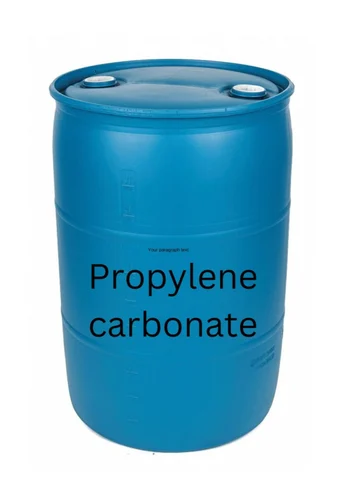Blog
Propylene Carbonate SDS: Understanding the Importance
Propylene carbonate SDS is crucial for ensuring the safe handling and use of this chemical compound. Whether you’re in the manufacturing, chemical, or any industry that utilizes propylene carbonate, understanding the safety data sheet (SDS) is essential for maintaining safety standards and regulatory compliance. This guide will walk you through everything you need to know about propylene carbonate SDS, including its contents, applications, and best practices.
What is Propylene Carbonate?
Propylene carbonate is a colorless, odorless liquid used in various industrial applications. It serves as a solvent in the production of plastics, adhesives, coatings, and cosmetics. Due to its low toxicity and high boiling point, propylene carbonate is favored in many formulations. However, like any chemical, it must be handled with care, which is where the propylene carbonate SDS becomes vital.

The Role of Propylene Carbonate SDS
The propylene carbonate SDS provides comprehensive information about the chemical, including its properties, potential hazards, and safe handling instructions. It is a crucial document for any workplace using propylene carbonate, ensuring that employees are aware of the risks and know how to manage them safely. The SDS is not just a legal requirement but a tool for promoting workplace safety.
Key Sections of the Propylene Carbonate SDS
Understanding the different sections of the propylene carbonate SDS is important for ensuring safety. Here’s a breakdown of the key sections:
1. Identification
- This section identifies propylene carbonate, including its chemical name, synonyms, and relevant uses. It also provides emergency contact information.
2. Hazard Identification
- This section outlines the potential hazards associated with propylene carbonate. Although it is relatively safe, this section highlights any risks, such as skin and eye irritation, if mishandled.
3. Composition/Information on Ingredients
- This section provides details on the chemical composition of propylene carbonate, including its CAS number and any impurities that may be present.
4. First-Aid Measures
- In case of exposure, the propylene carbonate SDS offers first-aid instructions for different types of exposure, including inhalation, skin contact, and eye contact.
5. Fire-Fighting Measures
- While propylene carbonate is not highly flammable, this section details the appropriate fire-fighting measures to be taken in case of a fire.
6. Accidental Release Measures
- This section provides guidance on how to handle accidental spills or leaks of propylene carbonate to minimize harm to people and the environment.
7. Handling and Storage
- Proper handling and storage are essential for maintaining the safety of propylene carbonate. This section offers best practices to ensure it is stored correctly and handled safely.
8. Exposure Controls/Personal Protection
- This section outlines the necessary protective equipment and exposure limits to ensure safe working conditions when dealing with propylene carbonate.
Applications of Propylene Carbonate
Propylene carbonate is widely used across various industries due to its versatility. Some of the common applications include:
- Industrial Solvent: Used in coatings, adhesives, and paint removers.
- Cosmetic Ingredient: Found in products like makeup, skin creams, and hair products.
- Battery Electrolytes: Essential in lithium-ion batteries due to its high dielectric constant.
- Chemical Intermediate: Involved in the production of other chemicals and polymers.
Safe Handling Practices for Propylene Carbonate
To ensure the safe handling of propylene carbonate, follow these best practices:
- Wear Protective Equipment: Always wear gloves, goggles, and appropriate clothing to prevent skin and eye contact.
- Use in a Well-Ventilated Area: Ensure good ventilation to avoid inhaling any vapors or fumes.
- Store Properly: Keep propylene carbonate in a cool, dry place, away from incompatible substances.
- Follow SDS Instructions: Always refer to the propylene carbonate SDS for detailed handling and safety instructions.
Regulatory Compliance with Propylene Carbonate SDS
Compliance with regulatory standards is crucial for any business using propylene carbonate. The SDS ensures that you meet OSHA, EPA, and other regulatory bodies’ requirements. Regularly updating and reviewing the SDS helps maintain compliance and protects your employees and the environment.
Why Propylene Carbonate SDS is Essential for Your Business
Incorporating the propylene carbonate SDS into your safety protocols is vital for several reasons:
- Employee Safety: Ensures that employees are aware of the potential hazards and know how to handle the chemical safely.
- Legal Compliance: Helps meet legal obligations and avoid penalties for non-compliance with safety regulations.
- Environmental Protection: Guides proper disposal and spill management to minimize environmental impact.
Conclusion
Propylene carbonate SDS is an indispensable resource for anyone handling this chemical. By understanding and adhering to the guidelines in the SDS, you can ensure a safe working environment, protect your employees, and comply with legal requirements.
FAQS
Is Propylene Carbonate Hazardous?
Propylene carbonate is generally considered to be a low-hazard chemical. While it is not classified as highly hazardous, it can cause mild irritation if it comes into contact with the skin or eyes. Inhaling large amounts of its vapor might cause respiratory discomfort. Therefore, it should be handled with care, following the guidelines provided in its Safety Data Sheet (SDS).
Is Propylene Carbonate Non-Toxic?
Propylene carbonate has low toxicity, making it suitable for applications where minimal toxicity is essential, such as in cosmetics and pharmaceuticals. However, using it according to recommended guidelines is crucial to avoid potential health risks.
What is Propylene Carbonate Used For?
Propylene carbonate has a wide range of industrial and commercial uses. It is commonly used as a solvent in coatings, adhesives, and paint strippers. Additionally, it is utilized in the production of lithium-ion batteries, cosmetics, and personal care products, and as a chemical intermediate in various chemical reactions.
Is Propylene Carbonate Safe for Skin?
Propylene carbonate is generally safe for skin when used in appropriate concentrations, which is why it is commonly found in cosmetic and skincare products. However, in its pure form, it can cause mild skin irritation for some individuals. It’s recommended to avoid prolonged or repeated skin contact with the pure chemical to prevent irritation.
